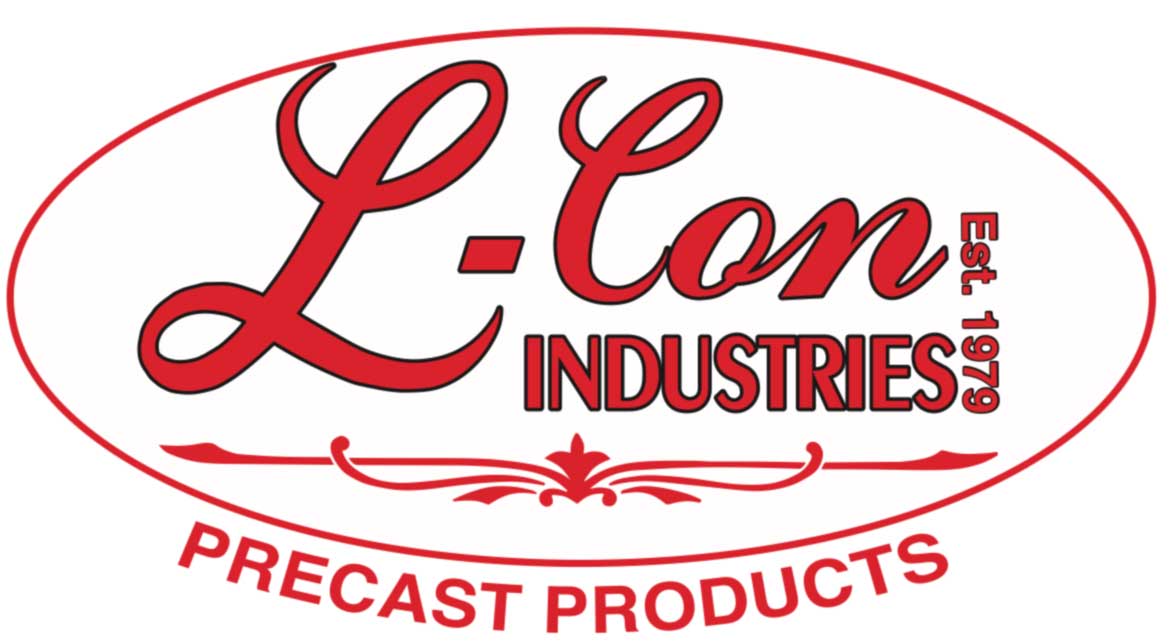The Function of a Septic Tank
The purpose of installing a septic tank is to ensure the proper treatment and disposal of waste. When the waste is diverted into the tank, the solids are separated from the water. The partial decomposition of the solids allows for proper disposal of the waste. Here’s how it works:
- The waste from your building enters the first compartment of a septic tank
- most of the tank will be filled with a watery sewage
- the bacteria will break down the solid waste, and this sludge will settle to the bottom of the septic tank
- the septic tank is designed to settle the heavier solids to the bottom and a filter most solids from entering the outlet pipe
- the sewage then crosses over into the pump chamber, where it flows to the septic drain field or pump out.
You want to make sure you choose a dependable long lasting concrete septic tank for a farm, home or business. With L-con Industries’ precast concrete septic tanks, you can count on a quality, durable product that will last decades.
Advantages of Precast Septic Tanks
Precast concrete septic tanks are a great option for quality and durability. Why choose precast concrete?
- The concrete is poured and cured in controlled conditions
- The concrete is strong and structurally sound
- They are faster to install than poured concrete
- They are resistant to most environmental factors such as soil conditions
- They have a long service life span compared to poured or plastic options
- They have a lower lifetime cost compared to poured or plastic options
L-con’s septic tanks and holding tanks have also been tested by a third-party independent testing agency, such as the Canadian Standards Association (CSA), to ensure it meets the specifications that it was designed for.
There are also plastic septic tank options available on the market. While plastic tanks are resistant to water corrosion, lightweight and less cumbersome to transport, as well as cheaper, they do have their disadvantages:
- They are more easily damaged during installation.
- They can “float” and move under the ground much more easily due to their weight.
- Plastic septic tanks may not be allowed in your municipality.
- Tree roots can damage them more easily than concrete tanks.
What Size of Septic Tank Do I Need?
To choose the right septic tank or septic system, you first have to consider several factors: your home’s square footage, the number of bedrooms, and the average number occupants.
How many bedrooms does your home have, and are they occupied by people? A general residential home guideline to working capacity is:
Number of bedrooms x 1.5 people per bedroom x 283.91 litres (75 gallons) per person = working capacity
Keep in mind that you will require a designer to provide the most accurate and correct calculations.
You might also want to take into consideration if you have multiple bathrooms, kitchens, dishwashers, or washing machines. However, extra working capacity may be required depending on the working conditions of your new tank. If you choose a spetic tank that is too big, the system may not work properly and efficiently. If you choose one that’s too small, you’ll end up with quite a mess!
We will be adding more information as we get started precasting Septic Tanks this summer.
Why Concrete is superior to Plastic Septic Tanks
Concrete septic tanks offer several advantages over plastic tanks:
- Concrete septic tanks are significantly heavier than plastic tanks. As a result, concrete tanks very low risk of floating.
- The long-term performance of a plastic tank depends on careful installation to achieve its support structure. often with different added aggregates On the other hand, concrete septic tanks have built-in structural integrity.
- Plastic tanks are more susceptible to damage and special care must be taken to ensure they don’t develop punctures during backfill. Concrete septic tanks, on the other hand, are highly durable and long-lasting





